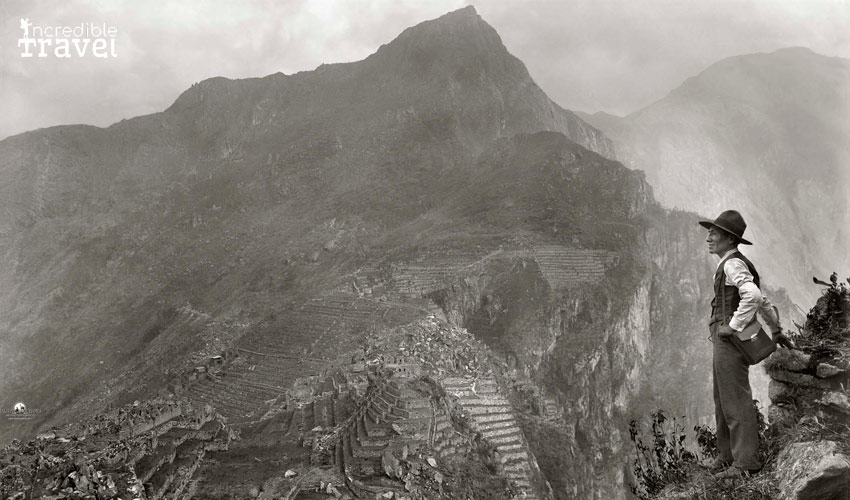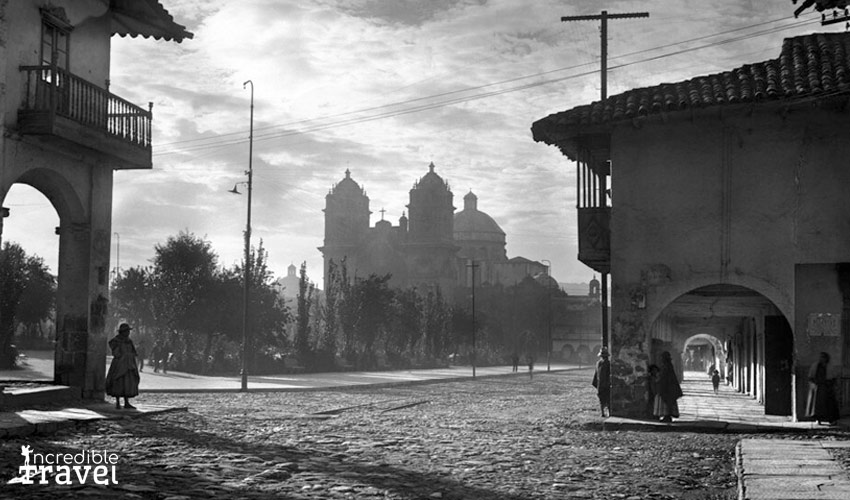The photographer Martín Chambi was born in 1891 in Coaza, a town like many in the heights of Puno, but he found in Cusco more than one reason to record his images in the heart of his camera. Martín Chambi always sought to know more about his trade, to learn from his elders in Arequipa (where he met the Vargas brothers at a very young age), in Cusco, in Lima or abroad; at all times he never ceased to be the master of the sensitive and timely eye.
The social and cultural context in which it developed was optimal, as a growing wave of tourist and historical interest and archaeological research (the citadel of Machu Picchu was officially discovered in 1911), as well as the arrival to the south of the modern benefits of technology (motorcycles, automobiles, air flights, new roads) were undoubtedly the visual spurs of his restless observing spirit.

Chambi was one of the protagonists of the so-called Cusco School of Photography. He exhibited in life at least ten times, both in the country and abroad. Many critics claim that he divided his work into two groups: the commercial one, which included commissioned portraits – studio and outdoor-; and the personal one, whose subject was anthropological.
The famous shots in which he captures crucial moments of the modern life of the ancient capital of Tahuantinsuyo (for example, the first air flight by Velasco Astete) would be, rather, at the intermediate point of both modalities.
The Peruvian researcher Jorge Heredia, based in Amsterdam, Holland, asserts that the photographer’s work has been revalued since the late 1970s with very diverse results, perhaps as heterogeneous as the nature of the legacy itself, whose density – he adds – makes it possible to highlight any fulcrum for all types of presentation.
“He has been a photographer of whites who coveted his images, but also of Indians and mestizos,” says Heredia, who affirms that the artist can be taken “as a documentary photographer to the letter”, and can also “come close to a certain formalism or to be considered without more as a plain artistic product, just as pictorialism did in its time ”.
It is said that he had a clear practical sense as an image professional. This is indicated by specialists in the field such as the filmmaker José Carlos Huayhuaca, author of the book Martín Chambi photographer, who states that this was a man “with his feet on the ground”, although not to the point of doing things for monetary reasons, since otherwise he would have stayed in Arequipa, where he had more possibilities than in Cusco. One of the stages of his life rarely mentioned in detail has been his work as a photojournalist for the newspaper La Crónica and the magazine Variedades (1920 – 1927), Peruvian publications that illustrated many of its pages during Leguía’s oncennium with photographs really unpublished by Chambi, all of them very suggestive, clear and perfectly conceived.
Events, curiosities, unique events, news, in short, was what the Puno lens, adopted by Cusco, revealed in the daily work, and not only for the capital of Lima, but also for the cosmopolitan city of Buenos Aires, where he collaborated nothing less than in the newspaper La Nación.
And it is that his work transcends personal concerns and reaches deep into the collective soul of the people. In his case, the photographic art does not become vertically indigenist parameters – as might be believed, although that stimulus of vindication helped him to become aware of his cultural identity -, but rather, it truly enriches itself, as an artist who was in the effort for capturing the uniqueness of each person, situation or landscape.
After enjoying the recognition of critics, the press and the public in his lifetime, he suffered a decline in his health and perhaps also in his work. Despite this, in 1958, when celebrating his golden anniversary as a professional, his figure was renewed and even regained presence in the media in interviews and reports. An important part of the Chambi archive – currently under the care of his daughter Julia, he has traveled to different countries in Latin America.
The initiative to observe the reproductions came from the same foreign institutions and associations, such as the Collective of Photographers, from Uruguay; the San Martín Museum, Argentina; the Palace of Fine Arts, Chile; and the Friends of Photography, from Sao Paula, Brazil.
The archive, whose plates are well preserved due to the dry climate of Cusco and the care of the family, should in any case have an excellent infrastructure that protects the valuable material. “Everything is preserved in the boxes that my grandfather left, with his own classification in his own handwriting. There are around 30 thousand glass plates; more than 12 thousand to 15 thousand photographs in rolls, which is a recent discovery whose details we will publish soon, ”says Teo Allain Chambi, the photographer’s grandson and one of those most interested in rescuing the total work.
However, he recognizes the need for a digital systematization of the work, so that the plates or photos are no longer directly manipulated.
Only after his death, in 1973, has his work once again been studied, appreciated and admired around the world, based on international exhibitions, such as the one held in the mid-nineties at the Círculo de Bellas Artes from Madrid. Or the most recent, in November 2001, in Paris, France, no less than in the sober ones of the Cervantes Institute.
Remarkable photos remain in the memory such as that of Victor Mendivil with a peasant from Paruro (1932), Organist in a chapel of ink (1936), Orchestra of the Echave family (Cusco, 1931); as well as the one entitled Chicha y sapo, cusqueñas customs (1930), among other exceptional shots.
We must mention that, despite the efforts of the photographer himself to disseminate his work (exhibitions in the interior, in Lima and outside the country prove it), it did not manage to remain in the memory of the men and women of his country until recently. few years, in which just the name of Martín Chambi tells us as much as his impressive images.

